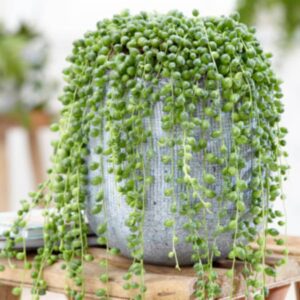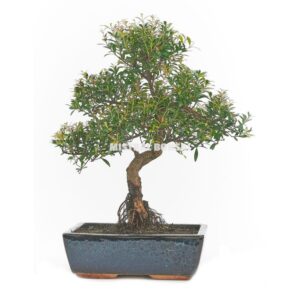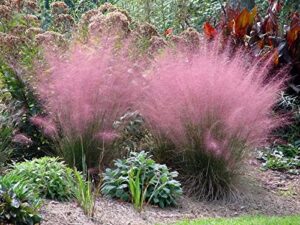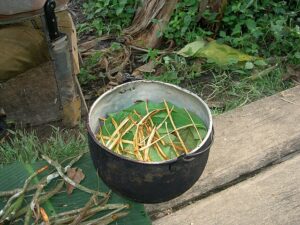Revolutionizing Aquariums: Discover the Secret of Thriving Anubias Plants
Anubias plants are a popular choice for aquarium enthusiasts due to their ease of care and striking appearance.
Anubias plants are known for their dark green, leathery leaves that add a touch of beauty to any aquarium setting. They are versatile plants that can thrive in a variety of water conditions, making them suitable for both beginners and experienced hobbyists. One of the key characteristics of anubias plants is their ability to grow both submerged and emersed, allowing for flexibility in aquarium landscaping. Their slow growth rate makes them ideal for low-maintenance tanks, requiring minimal pruning. Anubias plants can be attached to driftwood or rocks using fishing line or aquarium-safe glue, creating a natural-looking aquatic landscape. In addition to their aesthetic value, anubias plants also provide environmental benefits to aquarium inhabitants. The broad leaves of anubias plants offer shelter and grazing areas for fish and other aquatic creatures, promoting a healthy ecosystem within the tank. Overall, the hardy nature and ornamental appeal of anubias plants make them a favored choice for aquarists looking to enhance their underwater environment.These aquatic plants belong to the Araceae family and are native to parts of Africa..
The Resilient Anubias: A Guide to Thriving
The resilient Anubias plant is a popular choice for aquarium enthusiasts due to its hardy nature and ease of care. Originating from regions in Africa, such as the Congo River basin and Cameroon, Anubias plants are known for their lush green foliage and attractive appearance. These plants thrive in a wide range of water conditions, making them suitable for both beginners and experienced aquarists. Anubias plants are best suited for low to moderate light conditions and should be anchored to driftwood or rocks in the aquarium using fishing line or plant weights. They grow slowly, making them ideal for aquascaping projects or as focal points in a planted tank. To ensure the health and vitality of Anubias plants, it is essential to provide them with a nutrient-rich substrate and regular water changes. Additionally, these plants benefit from the occasional supplementation of liquid fertilizers to promote growth. With proper care and maintenance, the resilient Anubias plant will thrive and enhance the beauty of any aquarium, bringing a touch of nature into your aquatic environment.
Discover the Beauty of Anubias Plants: A Botanical Treasure for Your Home
Anubias plants are a true botanical treasure for any home aquarist or plant enthusiast. These beautiful aquatic plants belong to the Araceae family and are native to the tropical regions of Africa. Anubias plants are prized for their striking green leaves and unique appearance, making them a popular choice for aquariums and terrariums. One of the key features of Anubias plants is their resilience and adaptability to various water conditions. They are known for their ability to thrive in low light settings, making them an ideal choice for beginners or those looking to add more greenery to their aquarium without complicated care requirements. Anubias plants are also known for their slow growth rate, which means they are low maintenance and do not require frequent pruning. In addition to their aesthetic appeal and easy care, Anubias plants also offer benefits to aquatic environments. They aid in oxygen production and help maintain water quality by absorbing excess nutrients and harmful substances. Furthermore, these plants provide shelter and hiding spots for small aquatic creatures, contributing to a balanced and natural ecosystem within the aquarium. Overall, Anubias plants are a fantastic addition to any home setting, bringing beauty, elegance, and functionality to both aquariums and terrariums. Whether you are a beginner looking to enhance your aquatic space or an experienced plant enthusiast seeking a unique botanical treasure, consider adding Anubias plants to your collection and discover the natural beauty they have to offer.
Anubias Plant Care Guide: Tips and Tricks for Thriving Growth
| Anubias Plant Info | |
|---|---|
| Scientific Name | Anubias barteri |
| Origin | Africa |
| Lighting | Low to moderate |
| Water Conditions | pH 6.0-7.5, soft to moderately hard |
| Care Level | Easy |
| Propagation | Rhizome division or cuttings |
| Growth Rate | Slow |
| Special Notes | Anubias are hardy, adaptable plants that are often used in freshwater aquariums. They can thrive in low light conditions and are great for beginner aquarists. Ensure their rhizomes are not buried in substrate to prevent rot. |
FAQ
Sure! Here is a FAQ section about Anubias plants:

1. Q: What is an Anubias plant?
A: An Anubias plant is a type of aquatic plant often used in aquariums. It is popular for its attractive, dark green leaves and low maintenance requirements.
2. Q: How do I care for Anubias plants?
A: Anubias plants are relatively easy to care for. They prefer low to moderate light levels, and should not be placed in direct sunlight. They also thrive in a temperature range of 72-82°F (22-28°C) and require regular water changes to maintain water quality.
3. Q: Can Anubias plants be grown in low-light conditions?
A: Yes, Anubias plants are known for their ability to thrive in low-light conditions, making them a great choice for aquariums with limited lighting.
4. Q: How do I propagate Anubias plants?
A: Anubias plants can be propagated by dividing the rhizome. Simply cut the rhizome into sections, making sure each section has a few leaves attached. Plant the divided sections in the substrate, making sure the rhizome is not buried.
5. Q: Are Anubias plants safe for fish and other aquarium inhabitants?
A: Yes, Anubias plants are safe for fish and other aquarium inhabitants. In fact, they provide a natural habitat for fish to explore and hide among the leaves.
6. Q: Do Anubias plants require fertilizers?
A: Anubias plants are not heavy feeders and can thrive without the need for added fertilizers. However, you can use a liquid fertilizer specifically formulated for aquarium plants to promote growth and health.
7. Q: How can I prevent algae from growing on Anubias plants?
A: To prevent algae from growing on Anubias plants, ensure that the tank is not receiving too much direct sunlight, and maintain consistent water parameters through regular water changes. You can also introduce algae-eating organisms, such as snails or shrimp, to help keep algae at bay.
8. Q: Are Anubias plants suitable for beginners?
A: Yes, Anubias plants are considered beginner-friendly due to their low maintenance requirements and hardy nature. They are a great choice for those new to aquarium keeping or looking to add some greenery to their tank.
- Cat Palm vs Majesty Palm: Which Should You Choose? - June 30, 2024
- Flowers That Survive Winter: Discover the Exceptional No. 5 - June 30, 2024
- The Ultimate Guide to the Growth and Care of the Black Pagoda Lipstick Plant - June 29, 2024





